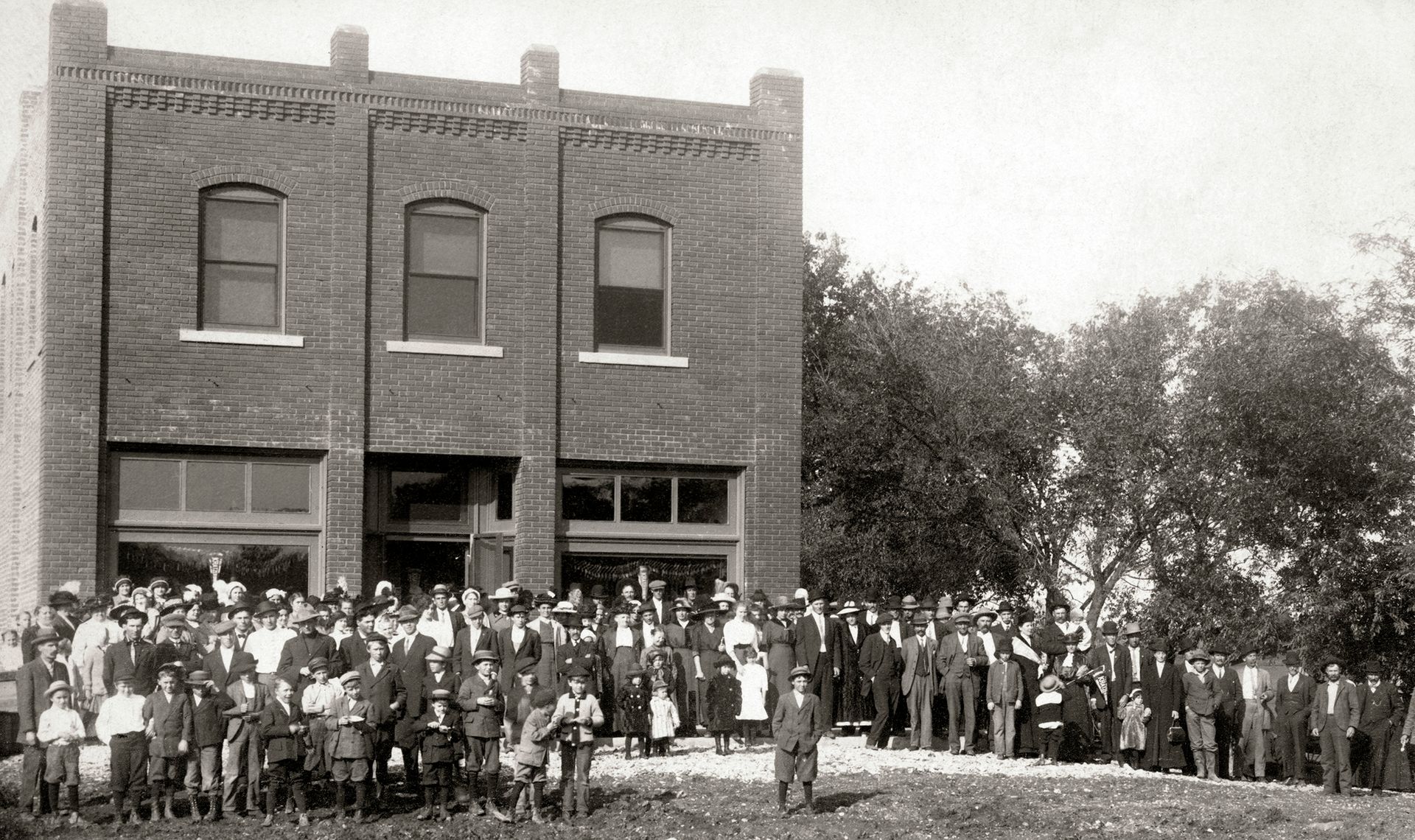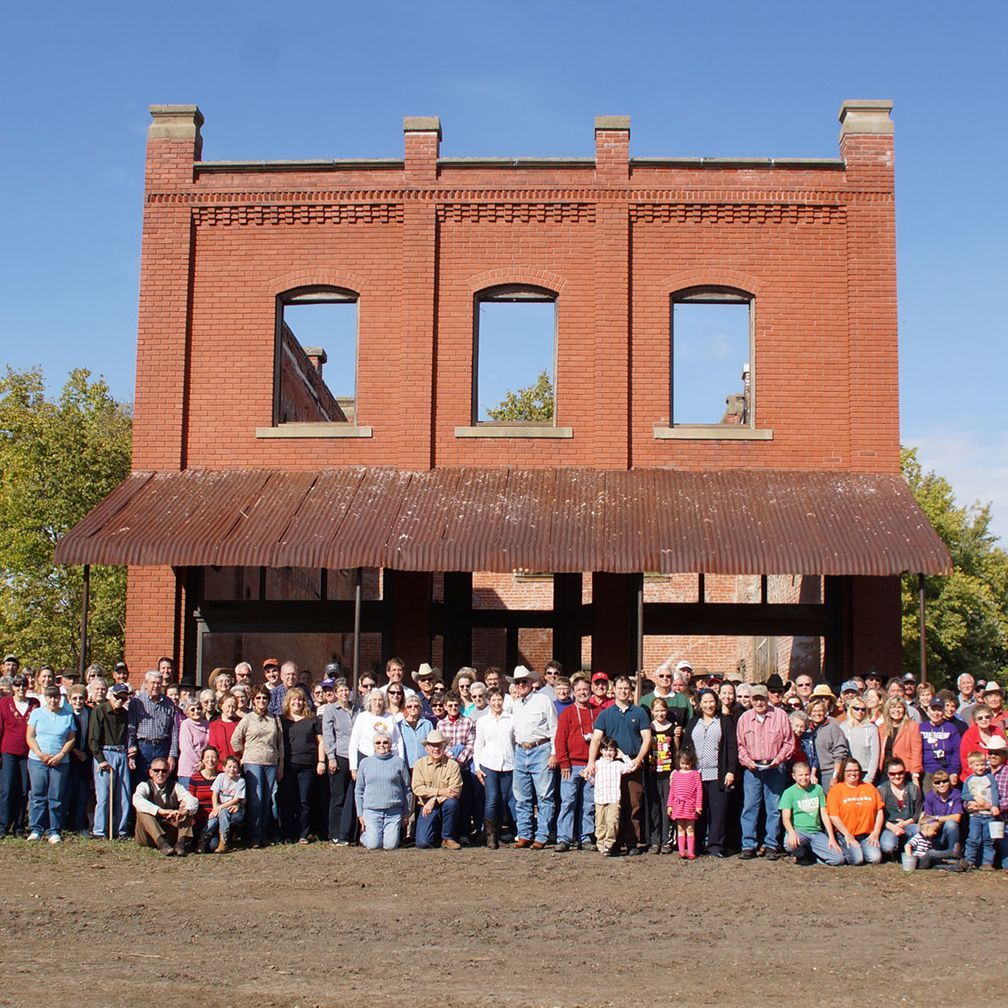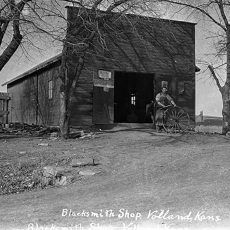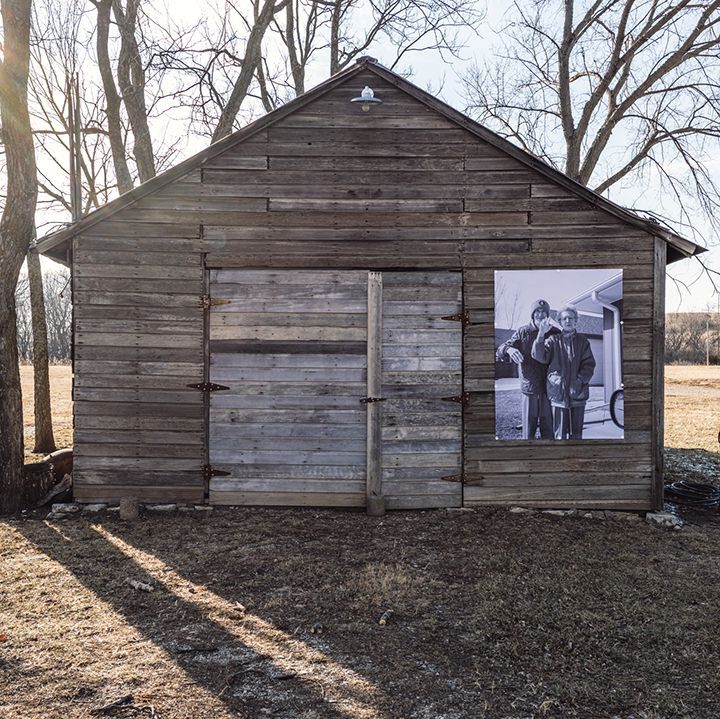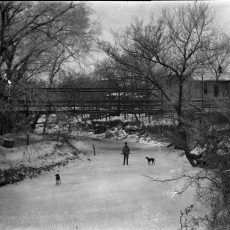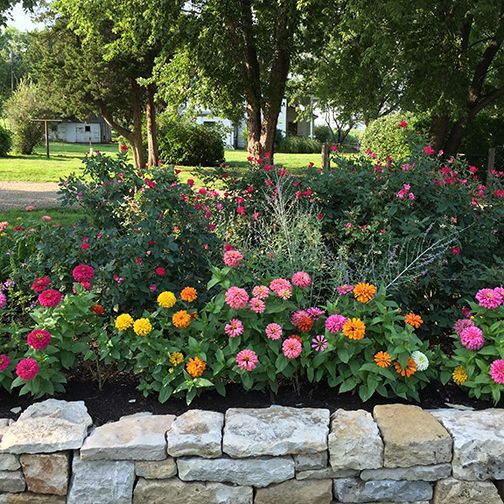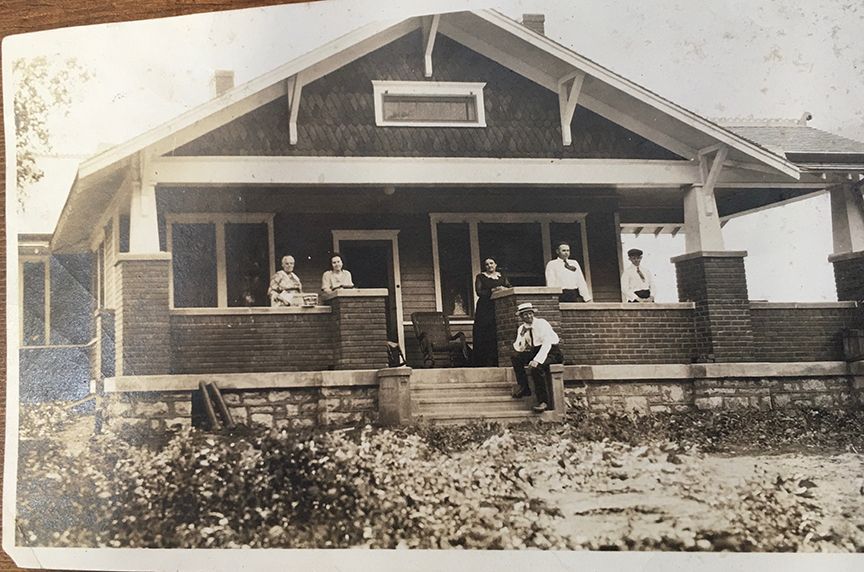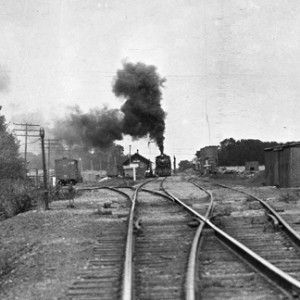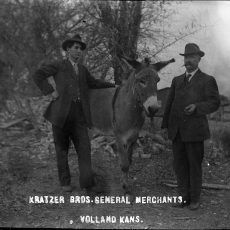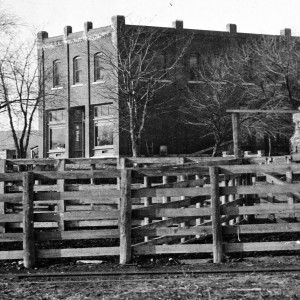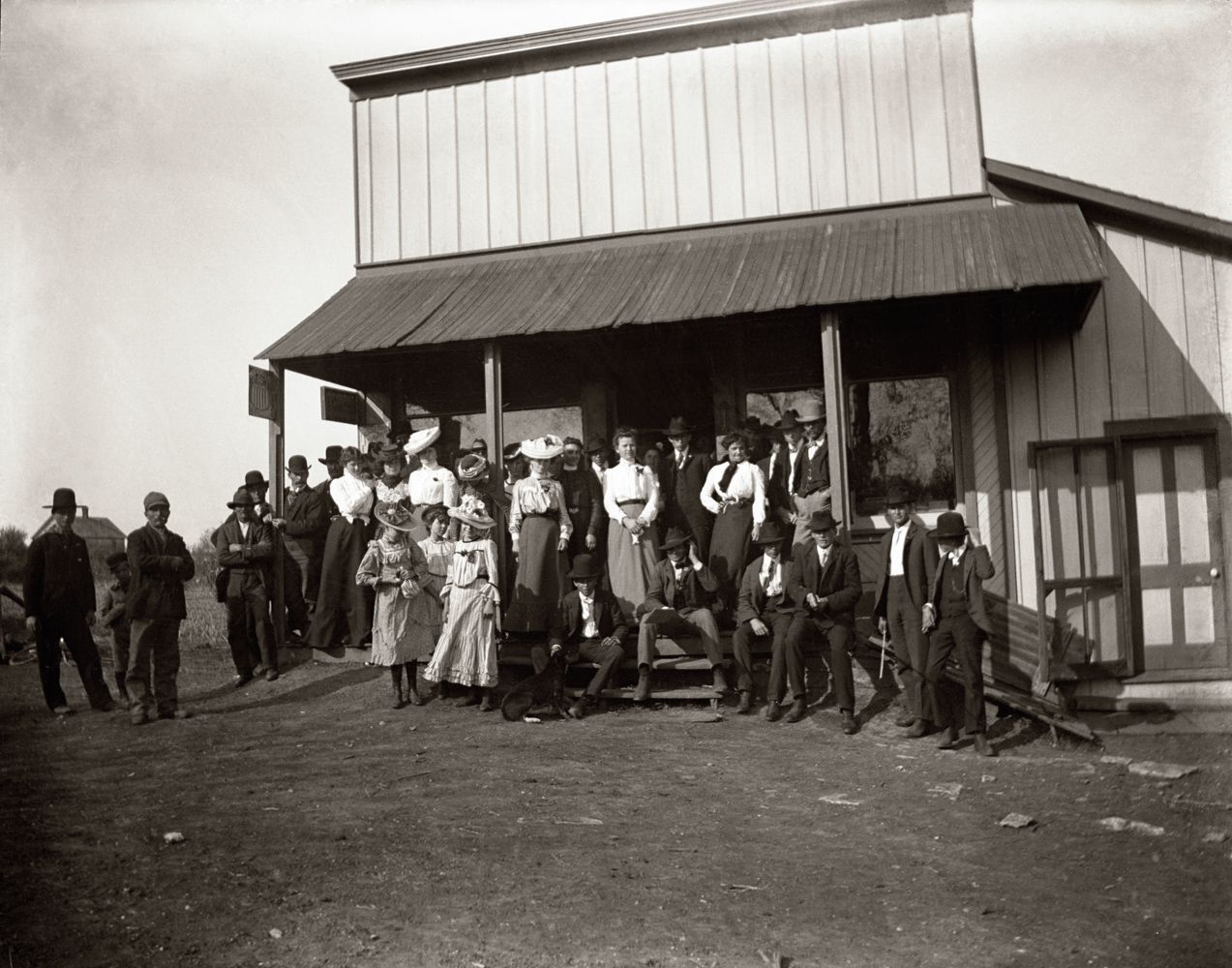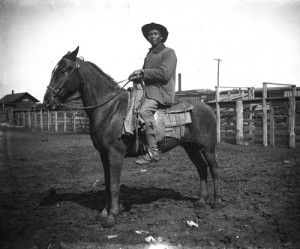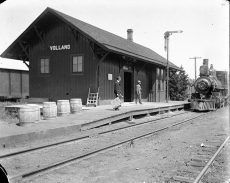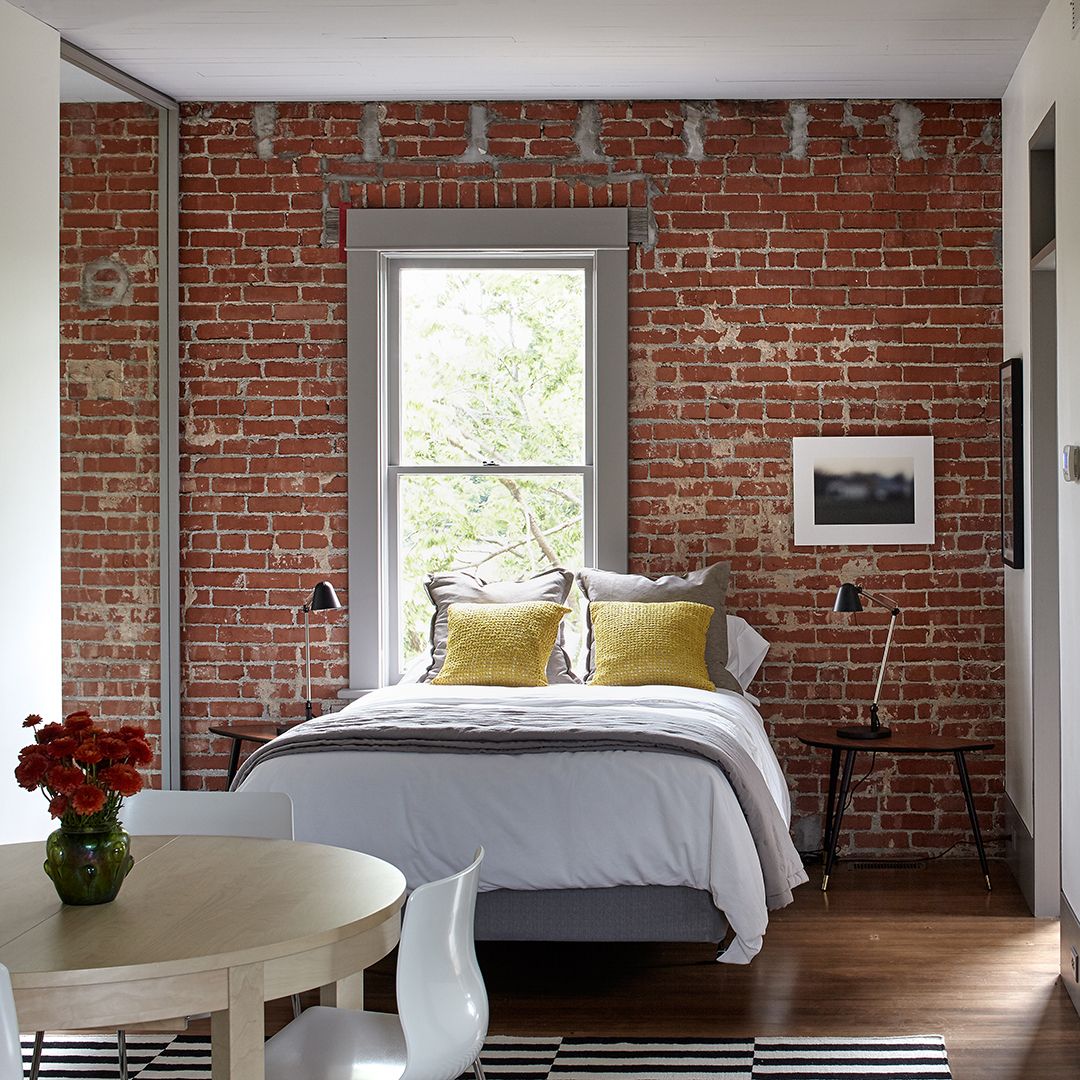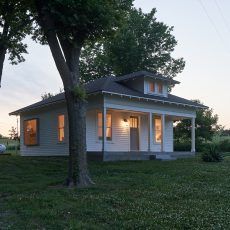History on the Trail
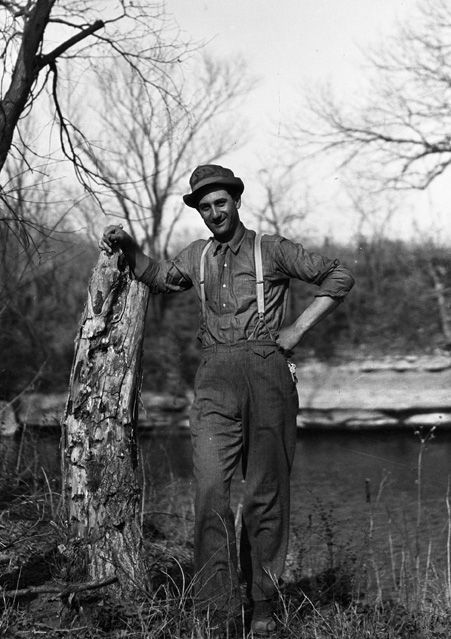
Otto Kratzer, one of the original Storekeepers of Kratzer Brothers Mercantile
Otto Kratzer, Storekeeper, documented the life of Volland in his photographs and home movies for many years. Thousands of his photos are archived in the
Wabaunsee County Historical Society and Museum in Alma, Kansas.
Did you know that Volland had the first tennis court in the area – and a softball team?
Families gathered here every Sunday afternoon, and sometimes there were a hundred people.
Otto Kratzer was the postmaster at Volland, and he hosted school board meetings at the Store.
Volland brought the first electricity to the area and provided separate phone service to Alma and Alta Vista.
As the social and cultural center of the surrounding ranching area, Volland was a lively place in the first part of the 20th century.
Here’s a taste of what you will see on the Trail –
The Train | During the railroad’s development in the 1880s, builders added a station between Alma and Alta Vista, one of the steepest inclines in Kansas. A nearby creek (Mill Creek) refilled steam engines, and the stop became Volland.
Passenger service was offered through 1942, cattle shipping continued until 1962 (when trucking became the preferred method to ship cattle), and mail delivery served Volland until 1955.
Kratzer Brothers Mercantile / The Volland Store |
The original Kratzer Brothers Mercantile was established in 1905 in a wood-frame storefront across Volland Road.
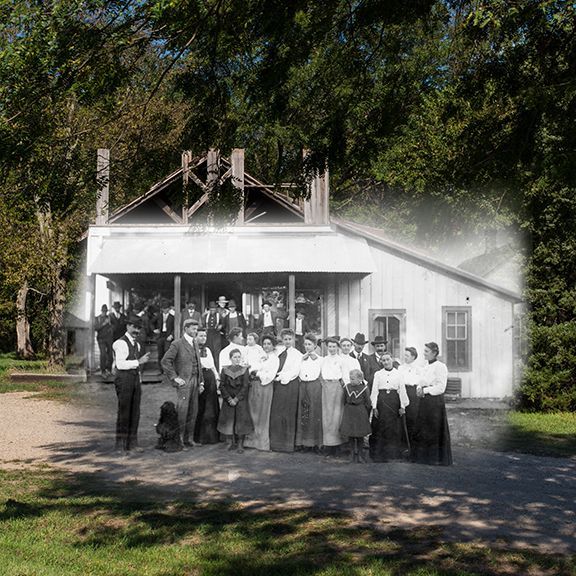
Re-photography by Tom Parish
After eight successful years, the Kratzer Brothers built a new, brick store that opened in 1913. The Volland Store operated continuously until 1971 when Otto Kratzer died. It sat vacant for many years.
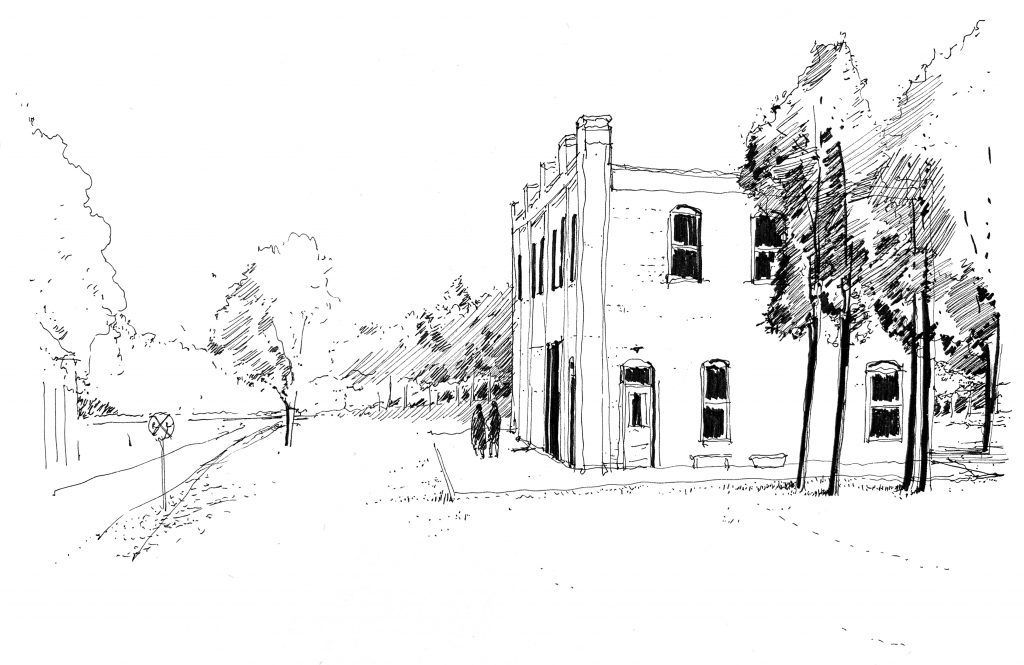
Illustrations by Daniel Renner
The Blacksmith Shop | First located by the railroad tracks, it was later moved to be closer to the Store. Today the Blacksmith Shop serves as an art studio, a workshop, a unique exhibition space, or it can be an occasional gathering place for lunch or a backdrop for musicians entertaining an audience in the picnic grove.
The Ice House Garden | Sitting atop the location of the original Ice house, the garden walls are formed from the stones that once lined the deep pit where ice was stored. Men cut ice from frozen creeks and brought it here before delivering it to surrounding ranches where it was stored in root cellars and covered with straw to serve as refrigeration.
The Ruin | Otto Kratzer built a home in 1917 for his wife and two sons close to the railroad tracks. The house caught fire in 1929 from cinders of a train’s steam engine that was idling nearby. The home burned to the ground, leaving the stone foundation as a memory, a “ruin.” Otto and his family moved to the top floor of the Volland Store where they remained the rest of their lives. Today, the Ruin is an outdoor venue for music, theatre, and other events at Volland.
Nature's Symphony
Photo by Otto Kratzer
From here you can see the original Kratzer Brothers Mercantile (the white store across Volland Road), the present-day Volland Store, train tracks, and the former site of the train depot and cattle pens (long gone) that sat near the original mercantile.
Imagine-
Volland Road is full of cowboys, horses, and dust. Hear the whistle of the train as it slows to a stop. Cattle stream out of boxcars, and cowboys drive them away to lush pastures of native grass. They grow fat and are brought back to Volland to be shipped off to Kansas City. In the meantime, section crews maintain the tracks, passengers arrive or pass through, mail and supplies are delivered – bricks, shoes, houses, and oysters – everything that can be ordered from a catalog – or that Otto Kratzer wants to serve at a holiday dinner in his family’s second floor residence in the Store. Families gather here on Thursday nights to shop and gossip and on Sunday afternoons to visit and play. The school bus stops by after school. The school board meets at the Store. It is the social and cultural center of the community.
Across Volland Road –
Original Kratzer Brothers Mercantile and the former location of the Train Depot and Stockyards | The little white store across the road was built in 1892 and operated by various merchants until Bill and Otto Kratzer moved to Volland and established it as Kratzer Brothers Mercantile. The mercantile served rail traffic, section crews, cowboys, and the families of surrounding ranches. The train depot and stockyards were next to and behind the store. Cattle shipping was a major driver of the economy.
Photos by Otto Kratzer
Look beyond tracks to the top of the hill -
Volland is spelled in limestone rocks, indicating the town the train was passing through.
It is most visible after prescribed Spring burning.
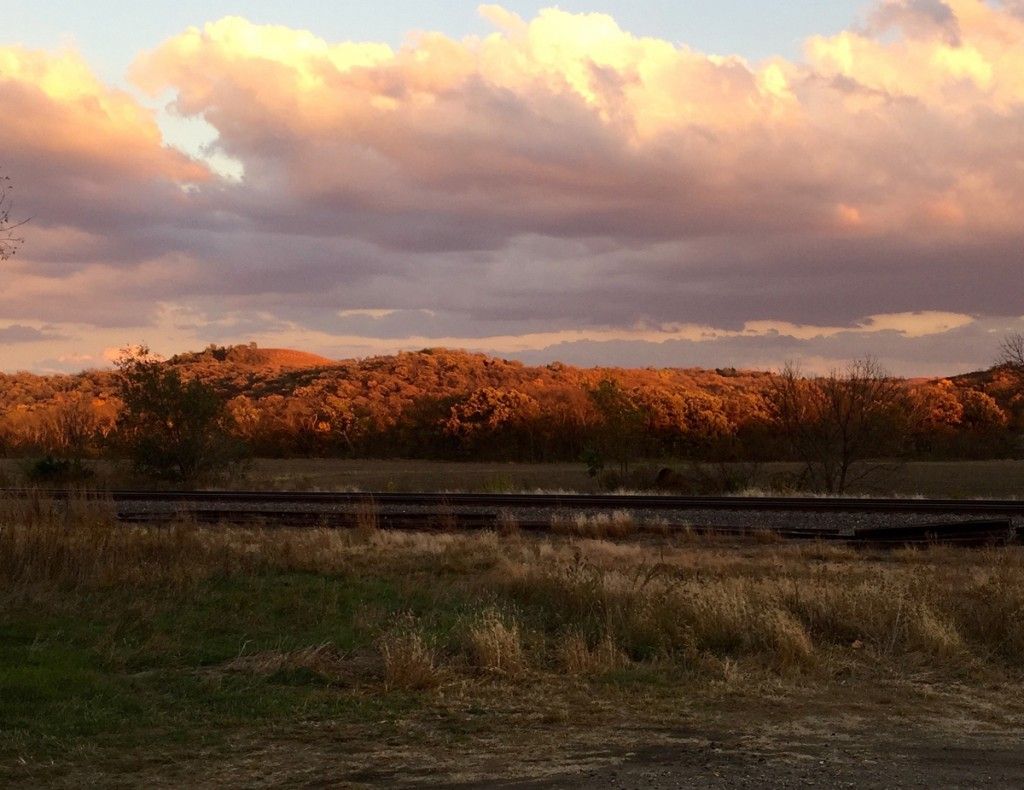
Enjoy this delightful film, produced by Greg Hoots with a grant from Humanities Kansas, for the Grand Opening of The Volland Store in June 2015.
Volland Memories
and
More history here!
Volland Today
In 2015, following significant renovations, it reopened as A Place for Art and Community hosting art exhibits, music concerts, horse shows, vintage motorcycle shows, talks by artists, and community gatherings.
In 2018 the Store was donated to the Volland Foundation, which now operates the Store, along with various other sites at Volland owned by the foundation.
In 2022, The Ruin was re-imagined as an outdoor performance venue for theatre and music.
Heart/Roots: Wabaunsee County, an original play based on stories old and new of Wabaunsee County, acted by local actors, written by Mary Pinard, and directed by Beth Wynstra (professors and colleagues at Babson College in Boston) opened on June 17 and 18 to sold-out crowds and rave reviews. More information here.
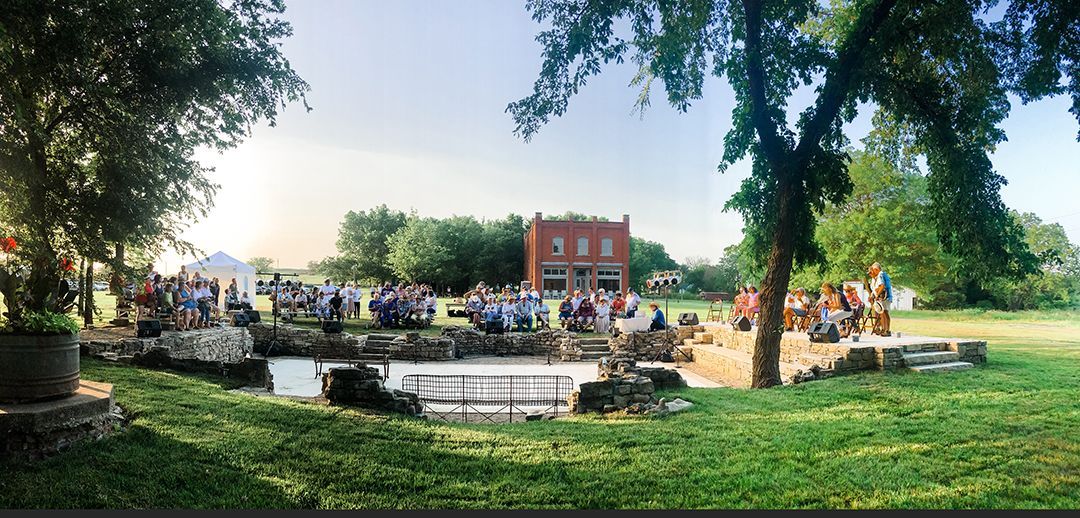
By its Tenth Anniversary, 2025, Volland had hosted 47 art exhibitions, 104 artists, 15 guest curators, 29 music events (including folk, western, classical, jazz, mariachi, flamenco, and a bell choir), a traveling Smithsonian exhibit, Crossroads in Rural America, solo exhibits by two Guggenheim Fellows, Bombino (an internationally known musician on a World Tour), a nationally recognized Charro equestrian performance (Charro Jerry Diaz and Family), a New York Times best-selling author, a one-woman play, two premiere performances, "Heart/Roots: Wabaunsee County" and "Writing Wabaunsee County," art historians, professors, ranchers, Native American artists and citizens, an astronomer, researchers, journalists, photographers, a geologist, a hydrologist, ichthyologists, a documentary filmmaker, a theatre director, art curators, conservationists, historians, history re-enactors, cowboy poets, two Kansas Poet Laureates, aspiring poets, a master stone mason, graphic designers, architects, folk historians, composers, and an astrophysicist.
Exhibitions are available to view Fridays, Saturdays and Sundays, 1-4 pm, but you are welcome to stop by anytime. Peek in the windows, visit the M.T. Liggett Sculpture Park across the road, explore the Nature Trail, discover the sculptures by Mark McHenry - or just hang out at the Ruin and watch the trains go by!
The Volland Residency Program is a critical piece of Volland's programming. The juried residency program offers artists, scientists, and humanitarians time and space in Volland, where they can enjoy nature, live simply, be inspired, and engage with the local community. Residents are awarded lodging, studio space, and a generous stipend.
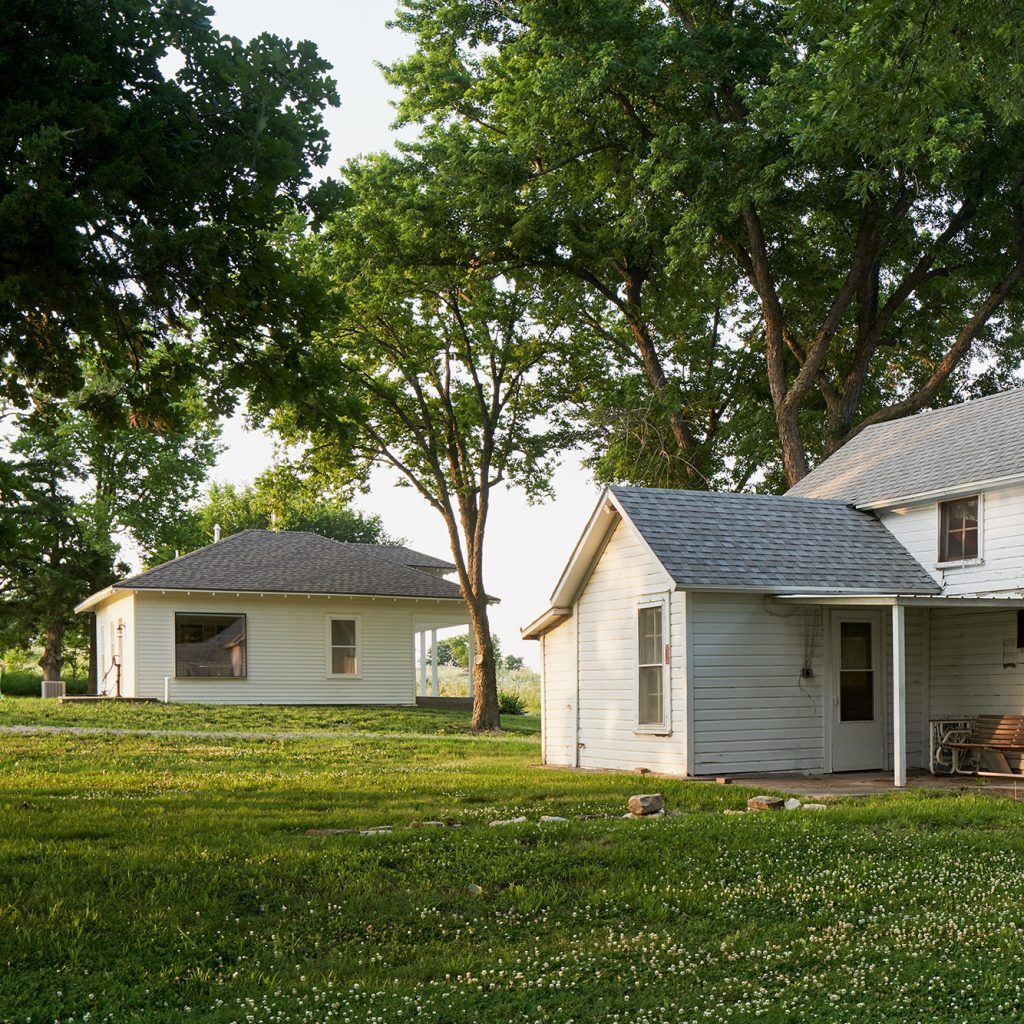
Photo by Mike Sinclair
The lodging for Volland Residents, Visiting Artists and
Self-Directed Residencies, are also available to the public through AirBnB, subject to availability.
Volland’s next steps into the future-
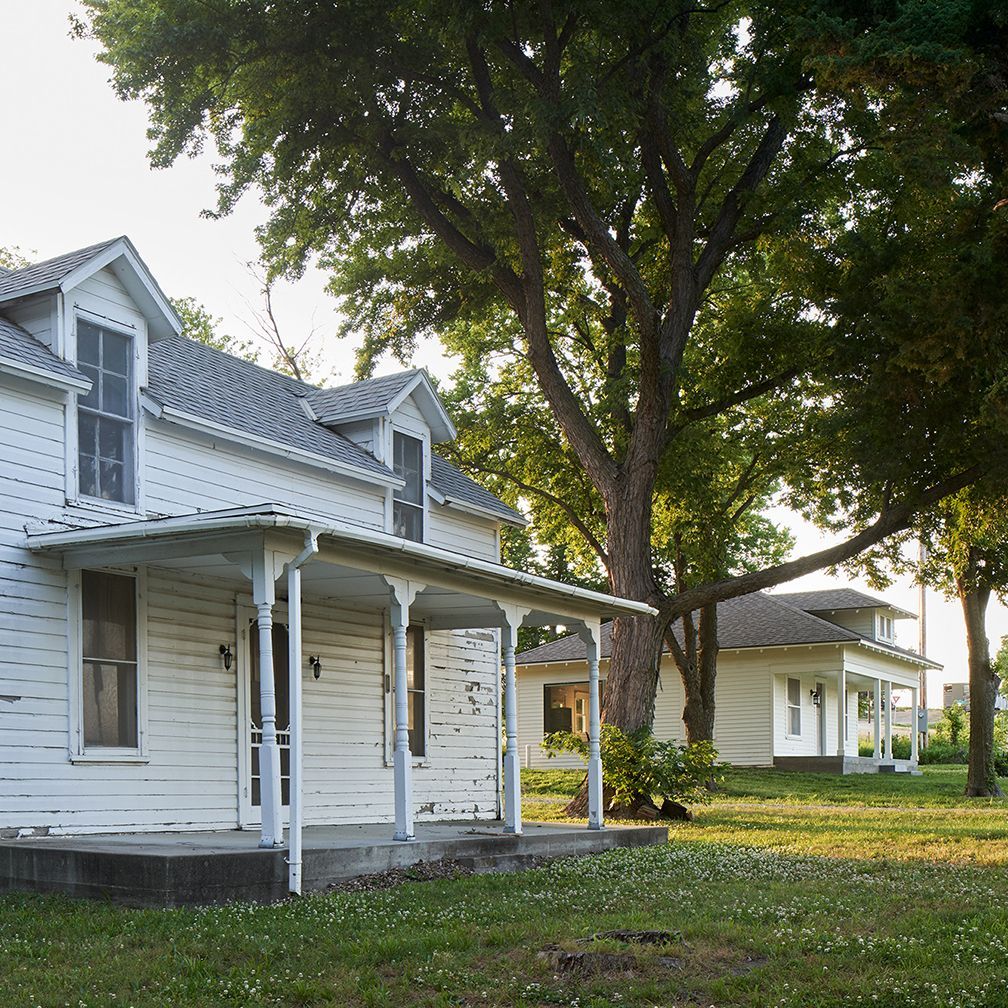
Photo by Mike Sinclair
A master plan is in development for Volland, to include the renovation of "Otto's House" for a central gathering space for Volland Residents, additional cottages for artist lodging, a purpose-built artist studio, the transformation of the Old Store into a museum, and administration/storage facilities.
The future is exciting, and as plans develop we will keep you informed. In the meantime if you have questions or ideas, feel free to contact us.
Naming opportunities are available.
Note: "Otto's House" was originally located just south of the Old Kratzer Store. It was moved there (dragged by horses) from the neighboring Fix Ranch to be the home of the new bride of the current storekeeper. Mr. Fix wanted his daughter to have a “real house,” not the lean-to addition of the store. Later it became home to Bill and Otto Kratzer when they moved to Volland in 1905 to establish their mercantile.

